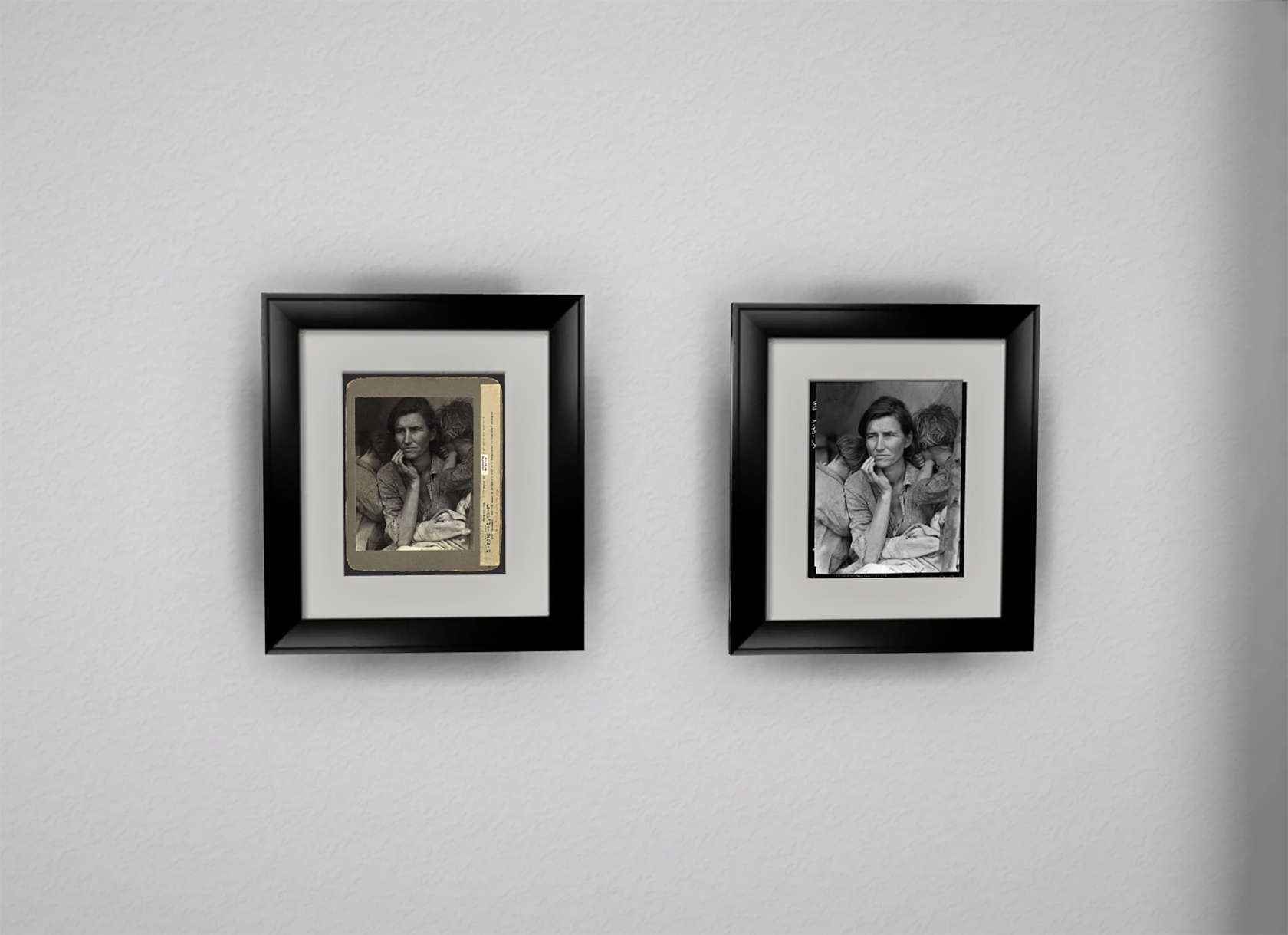
Subjects/Objects: A Critical Look at Photographic Truth is now on display as a virtual exhibition at the Clark Humanities Museum. Sophomores Gillian Bell, Chloe Boxer, Molly Bradshaw, Madeleine Callan, Margo Collazo, Katie Eu, Anna Horne, Tsion Mamo, Vivian Monteiro, Emma Sar, and Aanya Subramaniam curated the exhibition as part of Fletcher Jones Chair in Art and Professor of Art Ken Gonzales-Day’s Core III class, “The Mechanical Eye, Photography, and Truth” which focused on historical and contemporary issues surrounding photographic narratives. The exhibition includes works by 20 photographers, including Ansel Adams, Eve Arnold, Jacques Lowe, and Dorothea Lange.
The exhibition examines the relationships—or lack thereof—between the photographers and their subjects, and the narratives their images tell as a result of the dynamics between the subject, the photographer, and the viewer. “Objectification in photography is portraying a subject without agency,” the exhibition’s introduction reads. “Photographs are as much a reflection of the photographer as the subject. In other words, the subject becomes the object and the photographer becomes the subject.”
To inform their curation, Gonzales-Day’s students read a series of essays on photographers and documentary photographic practices. “Many of the readings and class discussions allowed us to consider the ways that photographic images can record aspects of a very ‘real’ world, while also serving to reinforce dominant ideologies, myths, and stereotypes,” he said. For example, Dorothea Lange’s iconic image “Migrant Mother,” which is included in the exhibition, quickly came to represent the experiences of White America during the Great Depression. But it also erased the nation’s indigenous histories, as the photo’s subject, Florence Owens Thompson, is now largely recognized as being of mixed ancestry. The image has also drawn speculation about its truthfulness: Lange altered the original negative to eliminate a thumb in the photo’s lower right section, challenging the image’s claims to documentary veracity.
Margo Collazo ’23, whose final class project focused on the storytelling limits of a single image, said the course changed the way she looks at contemporary photographic media: “It’s really made me think beyond what’s presented right in front of me. For example, Instagram may show people happy and having a good time, but that’s one second of a day that we see. This class has really made me aware that there’s a truth behind photos that isn’t always apparent.”
Chloe Boxer ’23 has realized that photography is “both an art and a window into the lives and experiences of people” and that she plans to make her portraiture more collaborative, building on the meaningful conversations and relationships she has with her subjects. “Photography has great power, and it must be wielded properly, especially in the digital age,” she said.
The virtual exhibition is one of the many ways in which Gonzales-Day adapted his course to remote instruction. In past semesters, student exhibitions have been physically displayed at the Clark Humanities Museum, and Subjects/Objects will be mounted at the museum when the Scripps community returns to campus. In the meantime, students built a virtual space that replicates the real-world experience as closely as possible. “We tried to keep the virtual reality version as close to the ‘real’ space as we could,” Gonzales-Day said.
In light of the class’s conversations about photographic truth, the seen, and the unseen, Boxer admitted that it was “a bit strange” that the Scripps community is seeing a virtual replica of the Clark Humanities Museum rather than an in-person exhibition. But by manipulating images to create a display that doesn’t physically exist yet, Gonzales-Day’s students are, in some ways, reflecting their exhibition’s thesis: “In many photographs of people, the truth of the subjects mixes with the truth of the photographer behind the lens. Multiple truths can exist at the same time.”

